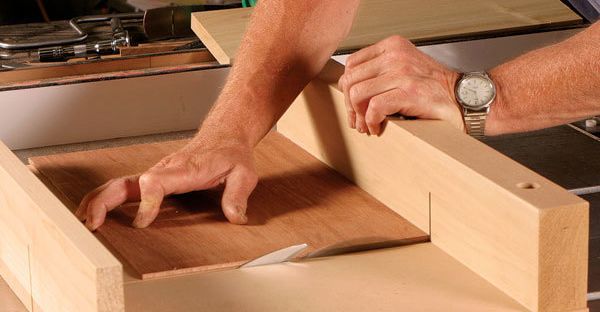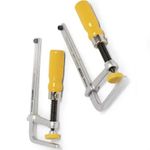All About Table Saw Jigs

The tablesaw is not only the centerpiece of nearly every woodworking shop, it is almost a prerequisite for the practice of woodworking. The tool’s unrivaled specialty is ripping lumber to width. But with the addition of simple jigs and fixtures, the tablesaw can become one of the most versatile machines in the shop, adapting itself to almost any operation.
At heart, the tablesaw is a simple tool. This simplicity lends itself to, and maybe even actually encourages, the addition of jigs and fixtures. For example, by adding extension tables to the side and back you can easily handle sheet goods up to 4-ft. by 8-ft. With other simple jigs you can cut tapers and scarfs, make finger joints, cut tenons, field panels, straighten warped lumber and even cut dovetails. No tablesaw would be complete without a couple of shop-made push sticks and hold-ins
One “must have” tablesaw fixture is the sliding crosscut sled. With this fixture, in its various manifestations, you can crosscut at 90° more accurately and safely or cut flawless 45° miters for picture frames.
The tablesaw gets a bad rap for safety and perhaps deservedly so. Statistics tell us more accidents happen on the tablesaw than on other tools. Kickback is the biggest problem, but the danger can be reduced if proper cutting procedures are combined with the use of a splitter. The guards that come with a new tablesaw are invariably relegated to a lonely existence on a back shelf the forth or fifth time they have to be removed for an operation. Nonetheless, a guard is an important safety feature and many woodworkers have designed alternatives to the factory guards that improve their functionality.
Yes, the tablesaw can do about any woodworking operation. But that doesn’t mean it is always the best tool for a given operation. For example, the tablesaw is probably not the best tool to use for shaping moldings, even though accessories sold just for this purpose are popular and miles of molding have been safely shaped on the tablesaw. And yes, you can cut coves and resaw boards on the tablesaw but I must admit I’m a bit squeamish. In time each of us finds the operations with which we’re comfortable on each tool.
Tablesaw safety aids
Tablesaw push sticks and hold-ins are such simple little things, usually made up from scraps around the shop. But there’s a common thread among the woodworkers who unfailingly use them — more than likely they’ve got all ten fingers.
One thing for sure, though — for such a simple device, there is much difference of opinion about what a push stick should look like. The old standby is a notched piece of scrap you hold at 45° to push the work through the blade. Over the years there have been improvements on the old standby design. They include push blocks with a long snout, a handsaw handle, and push sticks that straddle the rip fence.
Featherboards and hold-ins are first cousins to the push stick. These safety devices, which typically are fashioned from a piece of wood with a series of kervs cut into one end, clamp to the fence rail or lock into the miter gauge track.
Fine Woodworking Recommended Products

Incra Miter 1000HD

Hedgehog featherboards

MicroJig Matchfit dovetail clamps























Log in or create an account to post a comment.
Sign up Log in